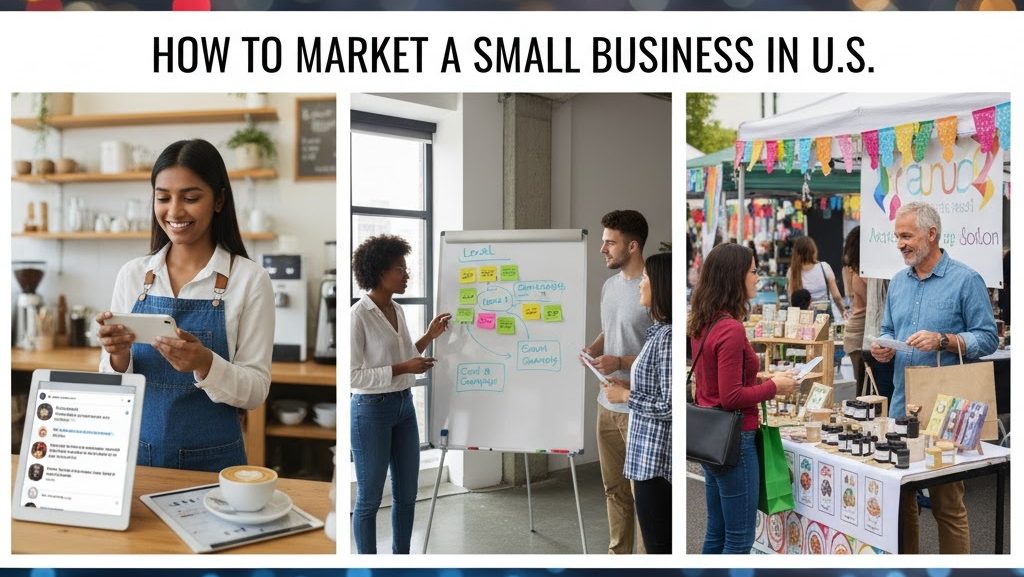The New Era of Women Entrepreneurs in America
Across the United States, women entrepreneurs are redefining the future of business. From small family-owned startups to billion-dollar enterprises, female founders are breaking barriers, reshaping industries, and inspiring inclusive economic growth. According to the 2024 State of Women-Owned Businesses Report, women now own over 42% of all U.S. businesses, contributing nearly $2 trillion to the national economy—a staggering rise compared to the last decade.
However, the path to success for many women remains paved with systemic challenges: funding disparities, limited mentorship access, and persistent gender bias. The remarkable part? Women continue to rise above these obstacles with innovation, resilience, and collaboration.
This article dives deep into the current landscape of women entrepreneurship in the U.S. (2025)—exploring opportunities, challenges, research-backed insights, and actionable strategies for success.
The Growth of Women-Owned Businesses: A 2025 Overview
Women-led businesses are expanding faster than the overall U.S. economy. Key data highlights the transformation:
| Statistic (2025) | Insight |
|---|---|
| 42% of U.S. businesses are women-owned | Equal to nearly 13 million companies nationwide |
| 1,800 new women-owned businesses | Started every day on average |
| Women of color | Represent 50% of all new women-owned businesses |
| Revenue contribution | Over $1.9 trillion annually |
| Top sectors | Healthcare, retail, professional services, and tech startups |
(Sources: American Express 2024 Report on Women-Owned Businesses, U.S. Small Business Administration)
This rapid rise reflects not only changing social norms but also policy shifts, access to technology, and growing investment in female entrepreneurship programs.
The Historical Perspective: From Exclusion to Empowerment
Women entrepreneurs have come a long way since the early 20th century when most banks wouldn’t lend to women without a male co-signer. The Women’s Business Ownership Act of 1988 marked a pivotal shift, granting women the right to obtain business loans independently.
Fast forward to today—female founders are leading companies in sectors once dominated by men, including finance, technology, and logistics. Yet, challenges like unequal funding and representation remain pressing.
Breaking the Glass Ceiling: The Persistent Challenges Women Face
Even with remarkable progress, women entrepreneurs still encounter systemic hurdles. Let’s explore the main barriers:
1. Gender Funding Gap
Women founders receive less than 2% of total venture capital funding annually in the U.S. (PitchBook 2024).
Despite this, women-led startups deliver higher ROI—$0.78 revenue per dollar invested vs. $0.31 for male-led startups (Boston Consulting Group, 2019). This paradox highlights an ongoing need for inclusive investing and data-driven funding reform.
2. Limited Access to Networks
Many investment and industry circles remain male-dominated. Studies show that women with fewer mentorship and investor connections are less likely to secure growth funding or high-level partnerships.
The Harvard Business Review found that women with female-led mentorship networks are 2.5 times more likely to found successful businesses.
3. Work-Life Balance and Societal Expectations
Female founders often juggle family and business responsibilities. A study from the University of California, Berkeley (2023) found that women entrepreneurs report 37% higher burnout rates than men, particularly in early-stage startups.
4. Stereotypes and Bias
Many female entrepreneurs still face doubts about their leadership abilities, especially in high-tech or manufacturing industries. These biases can influence investor trust, media coverage, and even hiring.
The Rise of Women in Tech and Innovation
While tech remains male-dominated, female entrepreneurs are making major strides in 2025.
According to the National Women’s Business Council (NWBC), women-led tech startups have increased by 68% in the last five years.
Top Female-Led Tech Startups to Watch in 2025
| Company | Founder | Sector | Notable Achievement |
|---|---|---|---|
| Canva (U.S. operations) | Melanie Perkins | Design Tech | Valued over $25B, empowering creators globally |
| The Mom Project | Allison Robinson | HR Tech | Created 1M+ flexible jobs for women |
| Bumble | Whitney Wolfe Herd | Social Media | Became first woman to take a dating app public |
| Alloy | Laura Spiekerman & Co | Fintech | Simplified compliance for digital banks |
| Chief | Lindsay Kaplan & Carolyn Childers | Leadership Network | Exclusive community for women executives |
These innovators prove that women are not just participating in tech—they’re leading transformations that redefine innovation and leadership.
Research Insights: What Science Says About Women Entrepreneurs
Recent university-led studies shed light on how and why women succeed in entrepreneurship despite systemic barriers.
- University of Pennsylvania (Wharton School, 2024): Found that women-led startups exhibit greater resilience in downturns due to better team collaboration and long-term planning.
- MIT Sloan Research (2023): Revealed that mixed-gender founding teams raise 25% more follow-on funding than all-male teams, thanks to diverse decision-making.
- Stanford University Study (2022): Found that women founders tend to build mission-driven companies, which have higher employee retention rates and customer loyalty.
Scientific takeaway: Diversity, collaboration, and resilience—key traits often found in women-led ventures—directly contribute to long-term startup success.
Government and Institutional Support for Women Entrepreneurs
The U.S. government and major organizations now actively support women-owned enterprises. Here’s a list of resources and programs in 2025:
| Program / Organization | Purpose | How It Helps Women Entrepreneurs |
|---|---|---|
| U.S. Small Business Administration (SBA) – Office of Women’s Business Ownership (OWBO) | Promotes equal access to resources | Offers funding, mentorship, and training |
| National Women’s Business Council (NWBC) | Federal advisory board | Advocates policy changes and research |
| Women-Owned Small Business (WOSB) Certification | SBA certification program | Gives women-owned firms access to federal contracts |
| Goldman Sachs 10,000 Women Initiative | Education and funding program | Offers capital and business education worldwide |
| SheEO / Coralus | Global funding network | Provides interest-free loans to women-led startups |
| Women in Tech (WiT) Network | Mentorship and global networking | Connects tech founders and industry leaders |
Tip: Founders can combine multiple programs—such as the WOSB certification plus a local SBA training center—to maximize growth opportunities and funding access.
How Women Are Redefining Leadership
Modern women entrepreneurs are challenging the definition of success by emphasizing empathy, inclusivity, and purpose-driven growth. Unlike the “win-at-all-costs” mentality, many women-led businesses focus on sustainable impact and community empowerment.
Key Leadership Traits Seen in Female Entrepreneurs:
- Empathy-Driven Management – Teams led by women report higher job satisfaction (Harvard Business Review, 2023).
- Collaborative Decision-Making – Encourages innovation and team ownership.
- Long-Term Vision – Women founders tend to focus on stability and community, not just short-term profit.
- Adaptability – Women show higher resilience during crises such as the COVID-19 pandemic.
How to Support and Empower Women Entrepreneurs (Actionable Steps)
Whether you’re a policymaker, investor, or fellow entrepreneur, here’s how you can drive meaningful change:
1. Close the Funding Gap
- Create dedicated venture funds for women (e.g., Female Founders Fund, BBG Ventures).
- Encourage gender-blind pitch evaluations to reduce unconscious bias.
2. Promote Mentorship Networks
- Support local Women’s Business Centers (WBCs) and accelerator programs.
- Encourage peer-to-peer networks like Chief or All Raise.
3. Enhance Access to STEM Education
- Universities and companies should fund STEM scholarships for women, fostering long-term entrepreneurial skills.
4. Highlight Success Stories
- Media and educational institutions must spotlight female role models to inspire new generations.
5. Implement Family-Friendly Business Policies
- Provide flexible work models, parental leave, and on-site childcare for founders and employees alike.
Regional Snapshot: Best U.S. Cities for Women Entrepreneurs in 2025
| City | Why It’s Great for Women Founders | Notable Programs |
|---|---|---|
| Austin, TX | Booming startup scene, low cost, and inclusive networks | Women@Austin, Capital Factory Female Founders |
| New York City, NY | Access to investors and corporate partners | WE NYC, Female Founders Fund |
| San Francisco, CA | Leading VC ecosystem | All Raise, Golden Seeds |
| Atlanta, GA | Diverse women-led business community | Invest Atlanta’s Women’s Entrepreneurship Initiative |
| Chicago, IL | Strong mentorship and corporate engagement | Chicago Innovation Exchange, Ms. Tech |
These cities offer a mix of capital, community, and opportunity tailored for women founders.
The Economic Impact of Women Entrepreneurs
Women-owned businesses contribute significantly to job creation and GDP.
According to the National Women’s Business Council (2024):
- Over 9 million people are employed by women-owned businesses.
- 1 in every 3 new jobs in the small business sector is created by a woman founder.
- States like California, Texas, Florida, and New York lead in the number of women-led enterprises.
Economic research from the World Bank (2024) supports this trend, indicating that closing the gender gap in entrepreneurship could boost U.S. GDP by up to 6% over the next decade.
Future Trends in Women Entrepreneurship (2025 and Beyond)
- Rise of Female Venture Capitalists – More women are entering VC, creating a virtuous cycle of funding.
- Increased Focus on Sustainability and Social Impact – Women entrepreneurs often lead in ESG and ethical business.
- AI and Tech Empowerment – Digital tools are reducing entry barriers, allowing women to scale faster.
- Global Collaboration – International networks are linking U.S. women founders with global markets.
- Policy-Driven Growth – State and federal grants are increasingly prioritizing women-owned small businesses.
FAQs About Women Entrepreneurs in the U.S.
Q1: What percentage of businesses in the U.S. are owned by women?
A: As of 2025, women own about 42% of all U.S. businesses, totaling nearly 13 million companies.
Q2: Why do women receive less venture capital than men?
A: Systemic bias, smaller investor networks, and lower representation in high-tech sectors contribute to the gap—but reforms and women-led VC funds are improving access.
Q3: What are the best industries for women entrepreneurs in 2025?
A: Healthcare, tech startups, consulting, retail, sustainability, and education services are top sectors for growth.
Q4: How can women entrepreneurs get funding?
A: Apply through programs like SBA WOSB, female-focused accelerators, and impact investors such as the Women Founders Fund.
Q5: Which universities support women in entrepreneurship?
A: Top institutions like Harvard (Innovation Lab), Stanford (Women Entrepreneurs Program), and MIT (Venture Mentoring Service) provide tailored programs for female founders.
Q6: How do women balance business and family life?
A: Through flexible scheduling, strong delegation, and leveraging support systems such as virtual assistants and shared childcare models—many also design companies with family-friendly cultures.
Final Insights: The Power of Persistence
Women entrepreneurs in the U.S. are not just breaking barriers—they’re rebuilding industries with empathy, innovation, and resilience. Backed by data, science, and community-driven support, the next decade promises an era where gender no longer defines opportunity—capability does.



